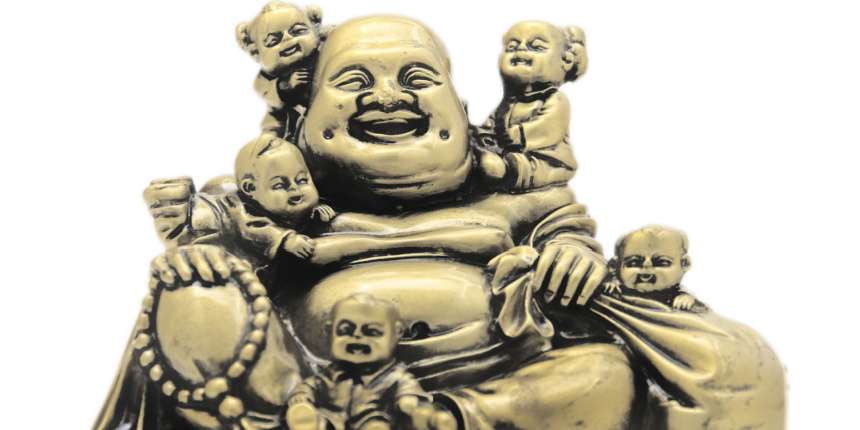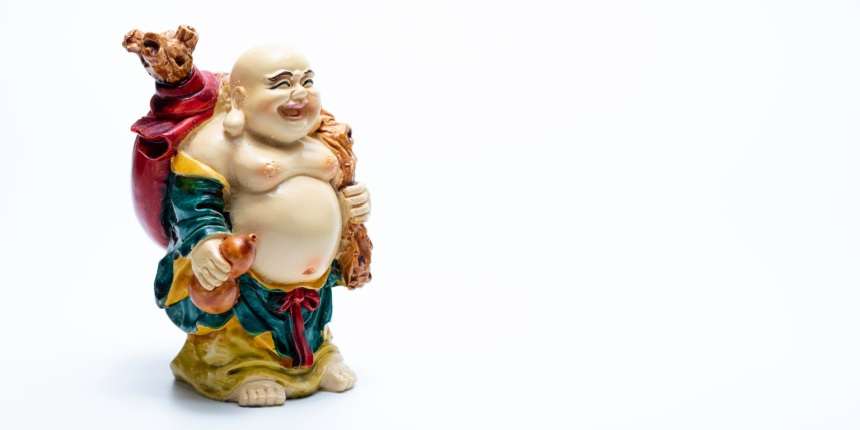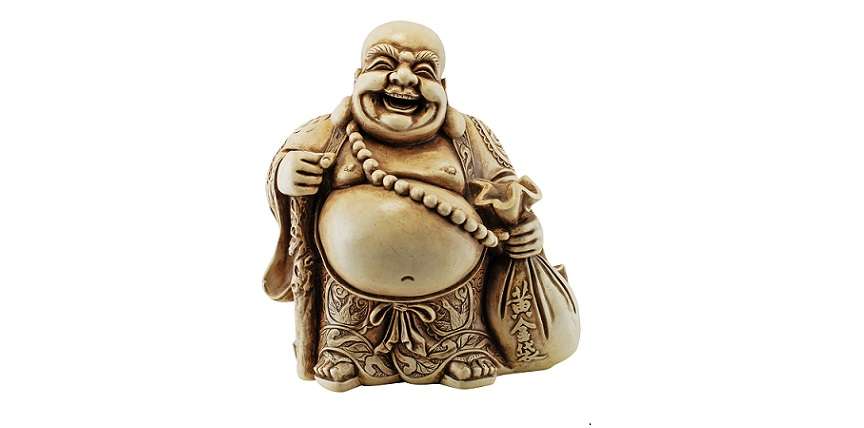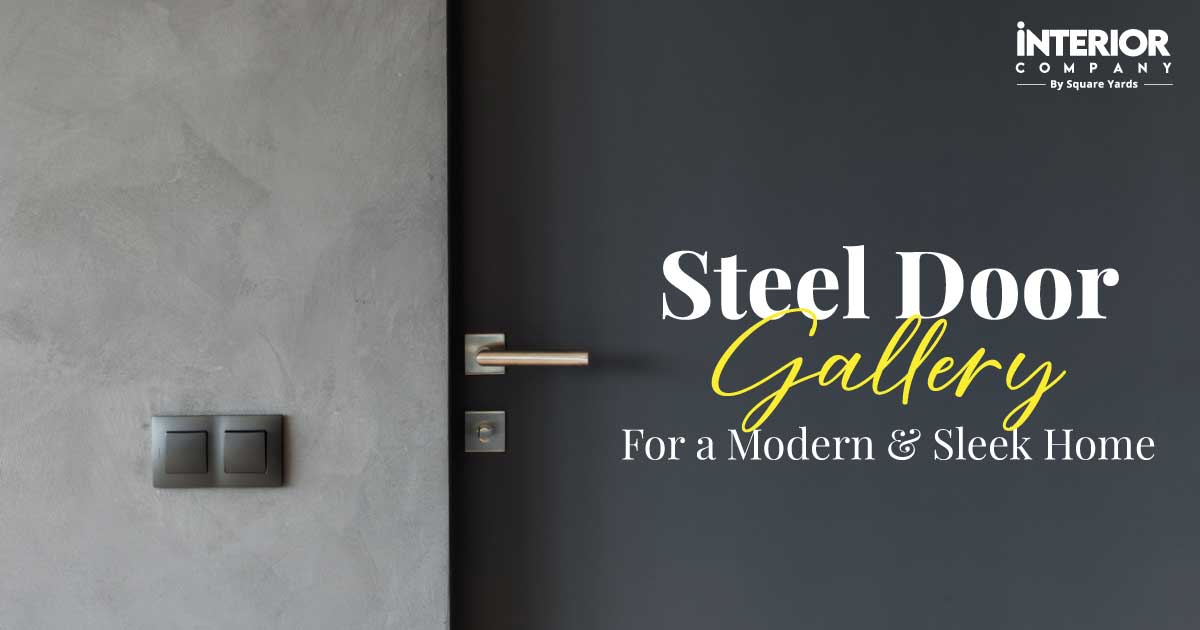- Kitchens
- Design Ideas
- Cities
- Trends
- Guides
- Price Calculators
- Our PortfolioNEW
- More
- Home
- Trends
- Furniture And Decor
- Home Decor
- Laughing Buddha Statue For Home
Laughing Buddha Statue for Home as Per Vastu & Its Types
Laughing Buddha is one of the most loved artefacts and is commonly found in homes, shops, offices, restaurants, hotels, museums, and temples. Not just in India, but the popularity of Laughing Buddha is witnessed in China too. Laughing Buddha statues for home differ from those used in offices and shops.
Table of Content
The artefact is typically made of porcelain, metal, wood, and stone or painted in colour and lines. It symbolises prosperity, happiness and contentment. While the Laughing Buddha is cherished worldwide, the statue holds the most significance in Asian countries in particular. Chinese calls Laughing Buddha as 'Budai.'
Have a rundown on this piece for a detailed insight into different types of Laughing Buddha statues, their meaning, benefits, and more!
Origin of Laughing Buddha
As per Chinese tradition, a Chinese Zen monk name Budai lived between 907 and 923 AD during the later Liang dynasty of China. The monk was a resident of Fenghua, and Buddhists would call him Qieci, meaning Pinyin in Chinese.
People deemed him a man of loving and good behaviour. According to some Buddhist traditions, people referred to him as ‘Bodhisattva’ or Buddha, commonly Maitreya, which means the future Buddha. Buddha’s jolly smile and big protruding stomach gave him the common title “Laughing Buddha.”
Also Read: Beautiful Goodluck Paintings for Home
Different Types of Laughing Buddha and their Meanings
Before you bury your head into thinking which Laughing Buddha statue is good for home, you must know that there are various types of Laughing Buddha, each having different meanings and significance. Some of the popular ones are as follows:
- Laughing Buddha with a Bowl
- Laughing Buddha with a Head or Balls
- Laughing Buddha with a Fan
- Laughing Buddha with Children
- Laughing Buddha with Sack or Bag
1. Laughing Buddha with a Bowl
Source: Pinterest
The Laughing Buddha with a bowl illustrates the life of a monk. It is related to the renunciation of material possessions and attaining enlightenment.
2. Laughing Buddha with Beads or Balls
Source: Pinterest
The ball in Buddha's hand is deemed a wealth ball and is known to offer prosperity and wealth to the family. At the same time, the one with beads is believed to be a monk demonstrating meditation practice. The beads also represent pearls of wisdom.
3. Laughing Buddha with a Fan
Source: Pinterest
The waving fan in Budai's hand represents the banishment of troubles. Therefore, the Laughing Buddha with a fan symbolises joy and happiness.
4. Laughing Buddha with Children

Usually, the Laughing Buddha with Children has five members. This particular form is the symbol of good fortune arriving from heaven. It also brings positive vibes and good luck to the family.
5. Laughing Buddha Carrying a Sack or Bag

The Buddha with a sack represents a traveller. The belief of people differs for Buddha with a sack. While some believe that the sack indicates Buddha collecting people’s woes and sadness and putting them in the sack, others think it means good fortune and wealth.
Significance of Different Postures of Laughing Buddha
Not only does the statue come in different types, but Buddha has different postures too. Each posture depicts something different. The details of the Laughing Buddha’s significance are as follows:
- Buddha represents happiness and riches in a standing position.
- The sitting posture of Buddha is believed to symbolise the balance of tranquillity and thoughts and illustrates love.
- If Buddha is wearing a fan hat on his head, it depicts good fortune and enjoyment.
- It symbolises good luck if you see Buddha sitting on a large gold nugget and prepared to offer the smaller one.
- Buddha carrying a bag full of gold on his back represents prosperity.
- The statue with a gold block with its hands directed in an upright position depicts good luck and abundant riches.
- Laughing Buddha with a fan on the left shoulder and a bag of blessings on the right is known to save you from mishaps during long journeys.
- If Buddha carries a bottle gourd in one hand and a fan in another, the Feng-shui symbol will bring blessings and good health.
Based on the above positions and meanings of different types of Buddhas, you can decide which type of Laughing Buddha is good for home and other places like offices, shops, etc.
How to Place Laughing Buddha Statues?

When you think of placing the statue or figurine in your home/office, do consider the Laughing Buddha direction as it might affect your Vastu. If you are a believer, you might know that any alteration may negatively impact the entire house or business.
Given below are some tips on what direction should Laughing Buddha face in a home or other places:
- If you plan to bring a Buddha statue to your home, ensure you have pure intention and belief in it. It is usually brought to bring serenity and contentment.
- If you already have his statue, you must light a candle on his birthday, which falls on 8th May. People say that it fulfils wishes.
- Placing Laughing Buddha in the office eliminates the effect of enemies, reduces tensions, and offers a clear mind.
- Keeping Buddha's statue on a desk can fulfil your aspirations and enhance luck.
- Placing the Buddha statue in Sheng Chi direction (Feng Shui Kua) is believed to help achieve goals, bring wealth, victory and well-being, and benefit self-development.
- Display the statues in the South-East direction of the dining room or bedroom, or the main hall of the home to drive windfall luck and increase family income.
- Suppose you place the statue of Buddha as per the Feng Shui Bagua formula, i.e. in the East sector or in a direction where all the family members can see it when they all sit in the main hall or living room. In that case, it is thought to resolve the differences or any negative thoughts among the family members.
What to Avoid While Placing Laughing Buddha Statue?
Now that you are familiar with the importance of Buddha statue in houses and workplaces, you must ensure you don't place them wrongly. Otherwise, the purpose of bringing the Laughing Buddha statues will go in vain.
Below are the important pointers to keep in mind:
- The Laughing Buddha statue is sacred in Feng Shui and Buddhism. Hence, one must treat the statue with respect. Do not ever place it on the floor, bathroom, or kitchen.
- Avoid keeping it near any motor parts or electrical equipment.
- While placing it in the house, make sure that it is kept at an altitude which is at least equal to eye level. Don't keep it too close to the ground.
- Don't keep it on the floor.
- Avoid putting it on top of your TV or refrigerator.
- If you need help placing the statue facing the main entrance, try it on a corner or side table facing the main door.
- It is recommended to place the Laughing Buddha statue facing the main entrance and 30 inches above the ground.
- The surrounding area where the statue has been placed must be clean and tidy.
- Never keep the Buddha statue in the bathroom.
Laughing Buddha Statue Material
Laughing Buddha statues are available in stone, metal, wood, porcelain, etc. You can often find the statue painted in gold colour.
Interesting Facts about Laughing Buddha
Japanese pronounce Budai as Hotei, which means glutton or cloth sack. As the saying goes and what people believe, one can attract wealth and good luck by rubbing the belly of the Laughing Buddha. It is also considered one of the seven Japanese Shinto Gods of luck.
People in Thailand often confuse Budai with a Sangkachai, a widely-respected monk. Sangkachai was a Buddhist ‘Arhat; at the time of Lord Buddha. Lord Buddha honoured Angkachai for his superiority in exemplifying Dharma correctly and easily.
However, Sangkachai and Budai can be distinguished in two ways. While Budai is bald, Sangkachai has a trace of hair on his head. Secondly, Sangkachai wear robes tucked across one shoulder, while Budai’s both arms are covered, and his torso is left uncovered.
Treasure Cognition temple in Taiwan at Taichung has the largest Laughing Buddha statue in the country, with his bald head touching the ceiling. Nepalese call him 'Hasne Buddha', and English-speaking countries refer to him as 'Fat Buddha'. For more information about Vastu for Laughing Buddha, contact the experts at Interior Company.
**Images used are for illustration purposes only. Interior Company does not hold any copyright to the images unless mentioned explicitly.
Ready for a home transformation?
Let our designers assist you!
Recent Posts
You should never place a Buddha on the floor or in the bathroom.
It entirely depends on the pose and form of the direction of the Buddha statue. If you have a Bhumisparsha Buddha statue, it must face eastwards.
Related Category
- Bedroom
- Indoor Plants
- Lighting
- Living Room
- Tips and Advice





































